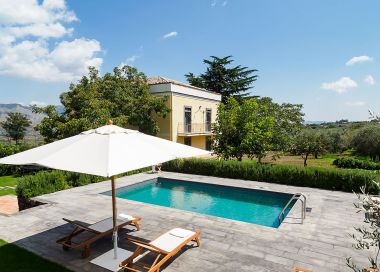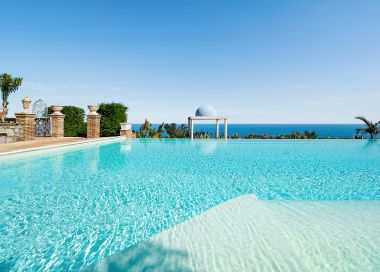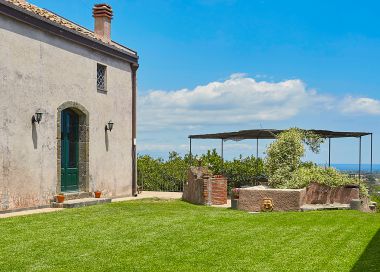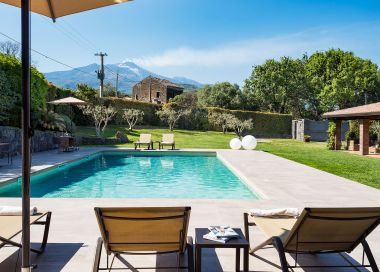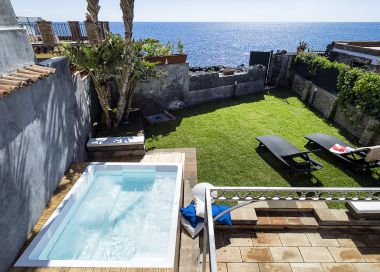The Etna volcano
Etna, the tallest active volcano in Europe
Mount Etna is the tallest active volcano in Europe. It is located in the north-east of Sicily and is the result of numerous geological events that have taken place over tens of thousands of years. Its huge mass faces the Ionian Sea to the east and is bordered on the northern side by the Alcantara river which over time has carved out of the bed of volcanic rock enormous gorges which now form part of the nature reserve of the Gorges of the Alcantara River. Etna is bordered to the west and south-west by the Simeto river. The volcano is currently approximately 3,300 metres high, has a perimeter of around 210 kilometres and a surface area of approximately 1,600 square kilometres. During periods of intense volcanic activity, lava can erupt from hundreds of temporary craters on the flanks of the volcano which are grouped into more than 260 eruptive systems. The current volcano, whose height is constantly changing through eruptions and rock falls, is constructed on the old volcanoes of Trifoglietto, whose collapse created the Valle del Bove crater, and Mongibello from the Arab word gebel which means "mountain of mountains", still active today. The summit of the volcano comprises the central crater, Voragine e Bocca Nuova, the north-east crater at a height of 1,911 metres above sea level and the south-east crater at a height of 1,971 metres above sea level. In addition to the craters on the summit, Montagnola and Monti Silvestri are of particular interest. Montagnola is one of the most important volcanic cones of Etna; it rises to the south of the Central Crater at an altitude of 2,500 metres and was created by the eruption of 1763. The Monti Silvestri were created by an eruption in 1892 and the road that runs from Zafferana and Nicolosi to the area in front of the Rifugio Sapienza and to the cable car, the destination for all visitors who wish to climb the volcano, passes between these two volcanic cones - Monte Silvestri Superiore and Monte Silvestri Inferiore. Located at a height of 2,900 metres is the Torre del Filisofo, a structure named after Empedocles, the philosopher from Agrigento who climbed the volcano to study its wonders and make his home there. Legend states that the philosopher died when he fell into the mouth of the volcano but no-one is sure whether he fell by accident or voluntarily.
Guided tours of the craters on the summit are available with expert guides in specially-adapted 4x4 buses and off-road vehicles. The company which operates the cable car runs these services officially, however, there are many 'parrallel' operators who offer a similar service. Departure takes places from the Rifugio Sapienza with "Acquaterra" on the southern slope or from Piano Provenzana with "S.T.A.R." on the northern slope. Flying over the volcano in a helicopter is a unique and exhilarating experience - of the various companies offering this service we recommend "Volcanotrek".
Guided tours of the craters on the summit are available with expert guides in specially-adapted 4x4 buses and off-road vehicles. The company which operates the cable car runs these services officially, however, there are many 'parrallel' operators who offer a similar service. Departure takes places from the Rifugio Sapienza with "Acquaterra" on the southern slope or from Piano Provenzana with "S.T.A.R." on the northern slope. Flying over the volcano in a helicopter is a unique and exhilarating experience - of the various companies offering this service we recommend "Volcanotrek".








